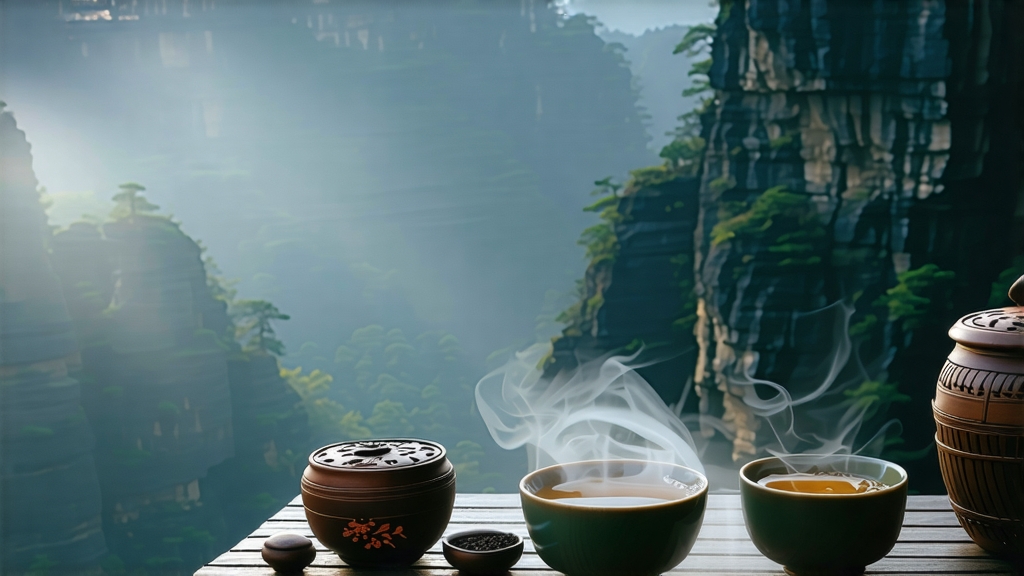
Long before English breakfast blends and afternoon tea services, there was Lapsang Souchong—the very first black tea ever created. Born in the cool, mineral-rich folds of the Wuyi Mountains in northern Fujian, this pine-smoked pioneer sailed out of the port of Xiamen in the early 1600s and rewrote the global story of tea. Dutch merchants carried it to Europe, where its smoky swagger bewitched the courts of Versailles and the coffeehouses of London; Catherine of Braganza toasted her 1662 marriage to Charles II with it, sealing the fashion for “bohea” that would dominate Europe for two centuries. Today, while newer black teas have softened their edges for mass markets, authentic Lapsang Souchong remains a defiantly original sip—campfire in a cup, yet layered with the same Wuyi rock-terroir that gives oolong its famous “yan yun” mineral echo.
What exactly is Lapsang Souchong? The name itself is a map. “Souchong” refers to the fourth and fifth leaves down the stem—broad, mature leaves that once were considered too coarse for green-tea production but possessed the stamina needed for black-tea oxidation. “Lapsang” is a corruption of the Minbei dialect “la” (pine) and “sang” (wood), pointing to the smoking sheds that dot Tongmu Guan, the protected core zone inside the Wuyi UNESCO biosphere reserve. Within Tongmu, only a handful of families still hold the permits to produce the genuine article; step outside the gorge and the same leaves become “zhengshan xiaozhong,” a subtler, unsmoked cousin. International labeling is notoriously loose, so authentic Lapsang Souchong is now stamped with a China National Geographic Indication code—look for “Tongmu Village” on the foil pouch or risk a caramel-colored imposter scented with liquid smoke.
The craft begins in late May, after the famous Wuyi rock oolongs have been finished. Under mist-cooled canopies of pine and bamboo, pickers select one bud with three or four mature leaves, aiming for a leathery toughness that will withstand three separate firings. The leaves are first withered over shallow bamboo trays suspended in the upper rafters of two-story wooden sheds. Below, smoldering pine logs—never resinous fresh wood, only aged trunks that have cured for at least a year—release a cool, fragrant smoke that drifts upward for eight to ten hours. This gentle warm-smoke wither halts grassy enzymes and implants the first whisper of pine. Next comes rolling: the leaves are kneaded in tight bamboo drums just hard enough to bruise cell walls and release oxidase, but not so hard that they break into powder. Oxidation itself is done in wicker-lined wooden boxes kept at 24 °C and 85 % humidity; here the leaf edges turn a coppery mahogany while the veins remain olive green, the signature “striped tiger” look that connoisseurs prize.
Now comes the step that separates Lapsang from every other black tea: the pine-smoke drying. The leaves are spread on sieves slid into brick ovens called qinglong, “blue-dragon” kilns, whose fireboxes sit outside the wall so the smoke must travel down a long flue before reaching the tea. This journey cools the smoke to 40–50 °C, preventing acrid tars from scorching the leaf. For six to eight hours the tea is alternately smoked and rested until the moisture drops to 4 % and the leaves glisten with a glossy ebony film. Master smokers judge readiness not by timer but by aroma: the moment the rising smoke shifts from sharp pine-needle top notes to a rounded, resin-sweet incense reminiscent of frankincense, the batch is pulled. A final sorting removes stems and yellow leaves, leaving only uniform, slightly curled strips that smell like a cedar-planked salmon just pulled from a Maine campfire—yet with a hidden brown-sugar sweetness that will bloom in the cup.
Brewing Lapsang Souchong is an exercise in smoke management. Use 3 g of leaf for every 100 ml of water, but drop the temperature to 90 °C; boiling water exaggerates creosol compounds and can turn the cup bitter. A quick 5-second rinse is optional—it tames the most volatile phenols without washing away the signature aroma. The first proper infusion should last only 10 seconds; subsequent steeps can lengthen by 5